#Frederick Barbarossa
Text
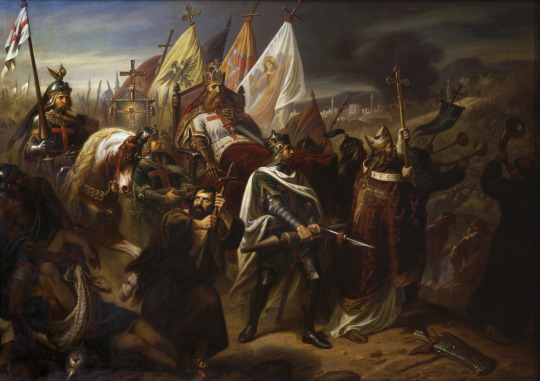
The Body of Barbarossa near Antioch | Der tote Barbarossa bei Antiochien
by Carl Wilhelm Kolbe the Younger
#carl wilhelm kolbe#art#frederick barbarossa#third crusade#barbarossa#dead#body#death#history#antioch#anatolia#medieval#middle ages#crusades#crusaders#christianity#german#emperor#germany#europe#european#knights#crusader#crusade#christendom#frederick i#holy roman emperor#the holy roman empire#king#karl wilhelm kolbe der jüngere
60 notes
·
View notes
Text

Hermann Vogel - Frederick Barbarossa drowning in the River Saleph on the Third Crusade, 1190.
6 notes
·
View notes
Text
1190-Frederick Barbarossa

Frederick Barbarossa (December 1122 – 10 June 1190), also known as Frederick I (German: Friedrich I, Italian: Federico I), was the Holy Roman Emperor from 1155 until his death 35 years later. He was elected King of Germany in Frankfurt on 4 March 1152 and crowned in Aachen on 9 March 1152. He was crowned King of Italy on 24 April 1155 in Pavia and emperor by Pope Adrian IV on 18 June 1155 in Rome.

Frederick joined the Third Crusade and opted to travel overland to the Holy Land. In 1190, Frederick drowned attempting to cross the Saleph river, leading to most of his army abandoning the Crusade before reaching Acre.
2 notes
·
View notes
Text
frederick barbarossa
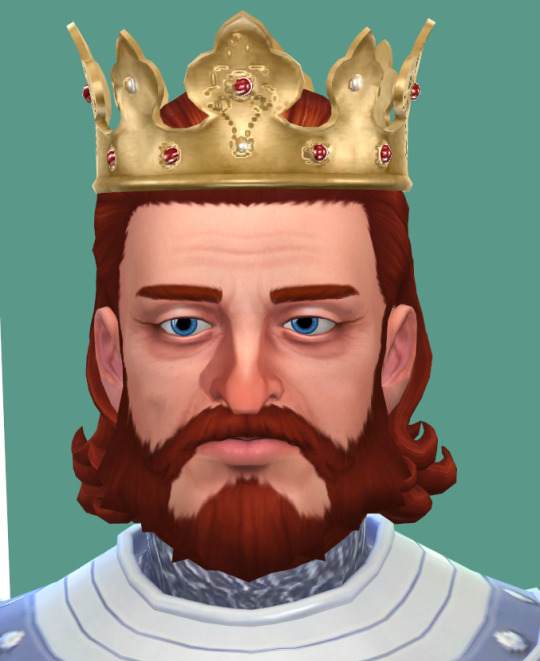
just some sad old man
@igorstory @pralinesims @okruee @imadako @simandy @miikocc @pyxiidis @saurusness @cosimetics-cc @simverses
2 notes
·
View notes
Text
The Feast of Epiphany: Who Were The Three Kings and Where Did They Come From? | Ancient Origins
This particular feast celebrates the visit of the Magi (a.k.a. The 3 Wise Men) to pay homage to the baby Jesus after His birth. In Italy, children get gifts & treats on this day. Not on Christmas.
https://www.ancient-origins.net/history-famous-people/three-kings-003966
View On WordPress
#1164#12th century#5th century AD#Archbishop of Cologne#Babylonia#Badadakharida#Badadilma#Balthazar#Bethlehem#Book of Matthew#Caspar#Christianity#Christmas#Cologne Cathedral#Constantinople#Emperor Constantine#Feast of the Epiphany#Frankincense#Frederick Barbarossa#Gold#Gospels#Gushnasaph#Hormisdas#India#Jerusalem#Jesus#Kagba#King Herod#Larvandad#Latin America
0 notes
Text

Frederick I Barbarossa, Holy Roman Emperor. By François-Édouard Picot.
#heiliges römisches reich#holy roman emperor#crusades#outremer#kingdom of heaven#romanticism#house of hohenstaufen#haus hohenstaufen#friedrich i barbarossa#emperor frederick i#king of italy#kingdom of italy#Herzog von Schwaben#römisch-deutscher König#rex romanorum#François-Édouard Picot#françois edouard picot
13 notes
·
View notes
Text
I find it really amusing how people bring history to modern politics
Like do you guys really think people who died a several hundred years ago will take side of any of you? My dear politically gifted fellas, your role models are long dead and most probably do not give a fuck 🥺
The world’ve changed so much that all applications of the past to modern times are inaccurate and basically wrong. Unless you feel enlightened enough to approximate all the human history lol
#duke’s thoughts#sorry it was inspired by a very painful topic of politicians using images of ‘national heroes’ in their political program#take Frederick I Barbarossa#or that never-ending quarrel about nationality of St. Olga#my dear Eastern Slavs there weren’t even a concept of a nation in 10th century 🥲#leave dead people alone they’ve already suffered enough
4 notes
·
View notes
Text
King under the mountain frederick barbarossa

A traditional tale of the death of Genghis Khan says he died falling from his horse while being injured, but that whether he died or not is unknown, and he may be merely resting.Kṛṣṇa, informs Arjuna during the Bhagavad Gītā that he periodically returns to Earth to establish order and justice, the Mahābhārata then claims that Viṣṇu will appear as Kalki at the end of the Kali Yuga to rule as king, Viṣṇu is often depicted as asleep, but is woken up by entreaties for help by the other godsĪsia (w/o Middle East) Mongolia."The Third Crusade: Death of Frederick Barbarossa, 1190." Internet History Sourcebooks Project.“Frederick Barbarossa is Wounded at the Battle of Legnano, 1176.” Drawing. “Frederick Barbarossa on Horseback.” Drawing. "Frederick Barbarossa and Milan." The Baldwin Project. 6. New York: Robert Appleton Company, 1909. 27 Jan. Kampers, Franz. "Frederick I (Barbarossa)." The Catholic Encyclopedia. Vol.“Frederick Barbarossa Entering Milan After Its Subjugation.” Drawing.“Frederick Barbarossa Awakening From His Long Slumber Under the Kyffhauser Mountain.” Photo.“Crown of the Holy Roman Emperor.” Photo.“Statue of Frederick I, Holy Roman Emperor.” Photo. "Biography of Frederick Barbarossa." .The legend said, “When the ravens cease to fly around the mountain, Barbarossa shall awake and restore Germany to its ancient greatness.”.He was said to be sitting in his state chair, with his crown, and a white beard reaching all the way down to the floor.Some refused to accept his death, believing that he was asleep in a cave in the mountains of Germany, surrounded by his knights.People in the German empire mourned Frederick’s for many years.The current was too fast and his heavy armor weighed him down and he drowned in the river.He tried to swim across the very swift Calycadmus River, despite the protests of his men.On June 10, 1190, Frederick and his men came to a river on the plains of Seleucea in Asia Minor.He defeated Muslim forces near Konya in Asia Minor on May 17, 1190.Frederick raised an army of one hundred fifty thousand men and led them toward Palestine.Frederick responded to the call of Pope Gregory VIII for another crusade.Jerusalem was captured in 1187 by the Muslims under the lead of Saladin.The Lombard League defeated the Germans at the Battle of Legnano in 1176 and led to the signing of the Treaty of Venice in 1177.The northern Italian towns formed the Lombardy League to defend themselves against another attack by Frederick.The city surrendered and many of its buildings and fortifications were destroyed.In 1158, he invaded Lombardy, and besieged and sought to starve the chief city of Milan.Frederick sought to control Lombardy, the northern cities of Italy.Frederick was then crowned emperor as per the terms of the Treaty of Constance.On June 18, 1155, Frederick delivered Arnold into the hands of Pope Adrian and the rebel leader was hung on the charges of treason and rebellion.The revolutionaries were led by Arnold of Bresecia.In 1155, Frederick marched to Rome and allied with Pope Adrian IV against rebellion in the city.In March 1153, he signed the Treaty of Constance with Pope Eugene III, which would crown Frederick as emperor and give him supremacy over the pope in return for help against the pope's enemies.Frederick demanded respect from existing princes and united the interests of their realms with those of the empire.As king, he sought to establish peace within his realm.He was crowned as German King on Main Aachen, Germany.He was well like by the German people and was unanimously accepted as king after being nominated by Conrad III.At times, he was very passionate, but could control his anger in times when it could jeopardize a negotiation.He was a charismatic leader who had both a majestic appearance as well as a kind personality.Frederick was a great orator whose speeches were clear and clever.He married Adelaide, the daughter of the Margrave of Vohburg, in 1149.Frederick set out with his uncle, Conrad III (King of Germany/Holy Roman Emperor), on the Second Crusade to the Holy Lands in 1147.In 1147, he became Duke of Swabia following his father’s death.He was born to parents Frederick, Duke of Swabia, and Judith, daughter of the Duke of Bavaria, in 1121.Frederick Barbarossa By: Danny Hendricks Period 2

1 note
·
View note
Text
Baldwin IV and the Pomander
Something I always thought interesting is the fact that not only the history of the Holy Land but also a specific medieval item is strongly connected to King Baldwin IV.
This medieval item is called 'Pomander' (or 'Bisamapfel' or 'Muskapfel' in German). A pomander is a usually small jewelry in a shape of a hollow globe. You can add any sort of fragrances in there, for exampel musk and their ultimate use is to make the air smell good, and of course to show wealth because aromatic substances were expensive in the middle ages.
These pomanders are said to have found their way to medieval Europe through the crusades, especially because Baldwin IV gifted them to Barbarossa as a sign of their alliance (and probably because he wanted him to fight in the Holy Land). Pomanders weren't know in medieval Europe at that time and may have found their way only because of the cultural interactions during the crusades.
A possible source for this information is, among others:
'[Pomanders] may have owed their introduction into European society to oriental example - Byzantine or more probably Islamic - for among the gifts King Baldwin IV of Jerusalem sent in 1174 to the Emperor Frederick Barbarossa were 'golden apples filled with musk'.
Source for this and the picture below: https://collections.vam.ac.uk/item/O105969/pomander-unknown/
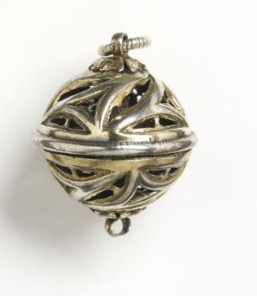
#baldwin iv#kingdom of heaven#king baldwin iv#kingdom of heaven king baldwin#crusaders#middle ages#medieval
33 notes
·
View notes
Text
12 notes
·
View notes
Note
can I still ask for a fun fact :3c
Europe has always been among the cringiest places on the planet, and uh.
Crusades? Yeah. Let’s talk about the Third Crusade aka the Kings’ Crusade, but specifically about how it started out because ooooooh boy
So the Crusades, for anyone unfamiliar, were basically a bunch of wars between Western Europe and the guys living in what they called the Holy Land, aka modern-day Israel and Palestine and the areas around there. See, Jerusalem was being held by an Islamic empire, and Europe fucking HATED that, so they got on a bunch of boats and went to terrorize the Middle East because that’s white people’s historically-proven cultural pastime
The Third Crusade came off of the Second Crusade, which the Zengid Dynasty wound up winning. The Europeans were pissed, so they headed off on their third attempt at retaking the Holy Land
Our first king is Holy Roman Emperor Frederick Barbarossa. He had a pretty good run, all things considered, getting all the way from what we now call Germany clear to what is now Turkey at the ripe old age of 66. He won several battles, lost a few, fucked with the Byzantines, and devastated Turkish forces.
That sounds like a win, right?
Well, it was, but then his horse slipped in a river somewhere in Turkey and he fucking died. His son, another Frederick, was so bad at getting his dad’s bones to Acre and everything that he had to outsource help to this dude called Conrad of Montferrat, who was technically the King of Jerusalem, but he himself would get assassinated by the Assassins (and they were assassins) literal days before his crowning
Our second king is Philip II of France, who is legit so unremarkable in terms of the Crusades that most of his involvement in them is him leaving them after getting dysentery and almost dying after being Very Bad At Crusading
Our third king is the only semi-competent one, Richard I of England, aka Richard the Lionheart, and he’s technically our fourth king because it was the king before him, Henry II, that tried the whole Crusade Thing before dying in a tragically British fashion. So we’ve got Richard, and he’s the only king here who actually managed to get to the Holy Land.
At first, Richard and Philip were at war. And then they said “hey wait let’s go just beat up Muslims instead”. And then they said “I hate you more than Muslims actually” and they started beating each other up, hence why Philip ended up leaving in the end.
Drama Happens! There’s some whole bullshit regarding marriage and then that dude from earlier, Conrad, because, guess what? Richard might’ve been the one to send the Assassins after that dude. Omg!!
But honestly? Not much to say about Richard. He did his (terrible horrible racist) job, and he won the Third Crusade. Sort of.
Well, Europe didn’t end up taking back Jerusalem. They would not, in fact, get Jerusalem back… ever! They had it for like two minutes during the Sixth Crusade, but they still don’t have control over the Holy Land to this day, much to their obvious annoyance
What happened with the two living kings? Well, they went back to war, of course! Richard would eventually die in an extremely comical and tragic and British fashion, getting killed by an arrow fired by a literal child. Philip would eventually die of Being Too Hot because he went traveling in the middle of summer while being pathetic and middle aged and French
12 notes
·
View notes
Text

Les Burgraves by Georges Rochegrosse
Les Burgraves is a historical play by Victor Hugo, first performed by the Comédie-Française on 7 March 1843. It takes place along the Rhine and features the return of Emperor Barbarossa.
#georges rochegrosse#les burgraves#art#history#medieval#frederick barbarossa#emperor barbarossa#the holy roman empire#holy roman emperor#holy roman empire#victor hugo#emperor#count#counts#europe#european#knights#middle ages#rhine#germany#france#burgrave#burggraf#maison de victor hugo#barbarossa#frederick i#castle#castles#swords#le rhin
50 notes
·
View notes
Text
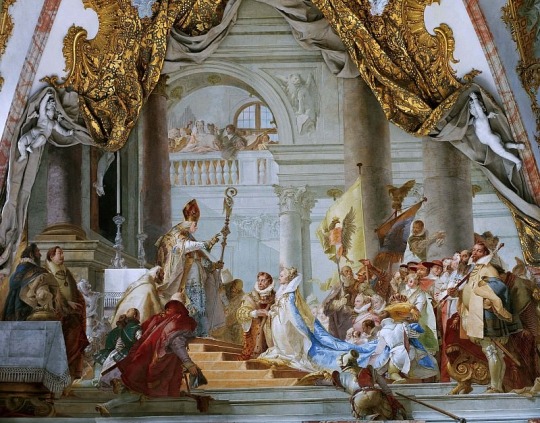
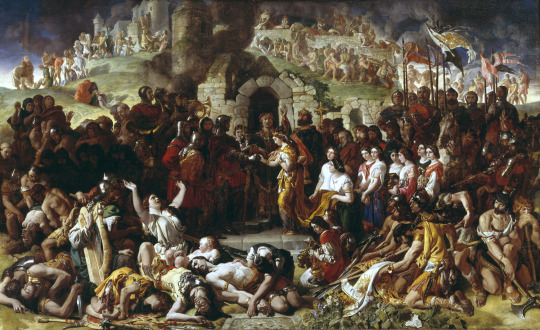
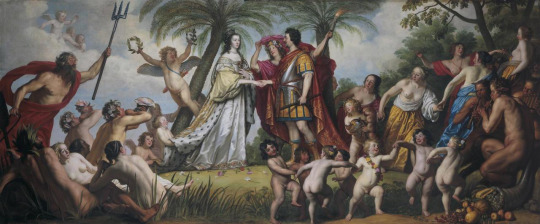
Dynastic Marriages in Paintings.
Emperor Frederick Barbarossa to Beatrice of Burgundy (m. 1156) painted 1752 by Giovanni Battista Tiepolo (1696-1770).
The Norman and the Gaelic Union: Strongbow, Earl of Pembroke and Aoife, Princess of Leinster (m. 1170) ; painted 1854 by Daniel Maclise (1806-1870).
Frederik Hendrik and Amalia Van Solms (m. 1625) painted 1651 by Gerard van Honthorst (1592 - 1656).
14 notes
·
View notes
Photo

Et quia solum Guilielmum Capuanorum Principem habebat superstitem, veritus ne eumdem conditione humanae fragilitatis amitteret, Sibiliam sororem Ducis Burgundiae duxit uxorem, quae non multo post Salerni mortua est, et apud Caveam est sepulta. Tertio Beatricem filiam Comitis de Reteste in uxoris accepit, de qua filiam habuit, quem Constantiam appellavit.
Chronicon Romualdi II, archiepiscopi Salernitani, p. 16
Beatrice was born around 1135 in the county of Rethel (northern France) from Gunther (also know as Ithier) de Vitry, earl of Rethel, and Beatrice of Namur.
On her mother’s side, Beatrice descended from Charlemagne (through his son, Louis the Pious), while on the paternal side she was a grandniece of Baldwin II King of Jerusalem (her paternal grandmother Matilda, titular Countess of Rethel, was the King’s younger sister). The Counts of Rethel were also vassals of the powerful House of Champagne, known for its successful marriage politics (Count Theobald IV of Blois-Champagne’s daughter, Isabelle, would marry in 1143 Duke Roger III of Apulia, eldest son of King Roger II of Sicily).
In 1151, Beatrice married this same Roger. The King of Sicily was at his third marriage at this point. His first wife had been Elvira, daughter of King Alfonso VI the Brave of León and Castile and of Galicia, who bore him six children (five sons and one daughter). However, when four of his sons (Roger, Tancred, Alphonse and the youngest, Henry) died before him, leaving only William as his heir, Roger II must have feared for his succession. In 1149, the King then married Sibylla, daughter of Duke Hugh II of Burgundy. She bore him a son, Henry (named after his late older brother), and two years later died of childbirth complications giving birth to a stillborn son. As this second Henry died young too, Roger thought about marrying for a third (and hopefully last) time.
It is possible that Roger’s choice of his third wife had been influenced by the future bride’s family ties with the Crusader royalties as Beatrice was related with both Queen Melisende of Jerusalem and the Queen’s niece Constance of Hauteville, ruling Princess of Antioch. Constance was also a first cousin once removed of Roger, who had (unsuccessfully) tried to snatch the Antiochian principality from her when her father Bohemond II was killed in battle 1130, leaving his two years old daughter as heir.
Beatrice bore Roger only a daughter, Constance, who was born in Palermo on November 2nd 1154. This baby girl (who would one day become Queen of Sicily) never knew her father as he died on February 26th.
Nothing certain is known about her widowed life, although we can suppose she took care of her only daughter. Beatrice died in Palermo on March 30th 1185, living enough to see Constance being betrothed to Emperor Frederick Barbarossa’s son, Henry.
The body of the Dowager Queen was laid to rest in the Chapel of St. Mary Magdalene, together with her predecessor, Elvira, and her step-children, Henry, Tancred, Alphonse and Roger. Through her daughter, Beatrice would become Emperor Frederick II’s grandmother.
Sources
Cronica di Romualdo Guarna, arcivescovo Salernitano Chronicon Romualdi II, archiepiscopi Salernitani Versione di G. del Re, con note e dilucidazione dello stesso
Garofalo Luigi, Tabularium regiae ac imperialis capellae collegiatae divi Petri in regio panormitano palatio Ferdinandi 2. regni Utriusque Siciliae regis
Hayes Dawn Marie, Roger II of Sicily. Family, Faith, and Empire in the Medieval Mediterranean World
Houben Hubert, Roger II Of Sicily: A Ruler Between East And West
SICILY/NAPLES: COUNTS & KINGS
Walter Ingeborg, BEATRICE di Rethel, regina di Sicilia, in Dizionario Biografico degli Italiani, vol. 7
#historicwomendaily#women#history#women in history#historical women#House of Hauteville#Roger II of Sicily#Beatrice of Rethel#norman swabian sicily#costanza i#people of sicily#women of sicily#myedit#historyedit
30 notes
·
View notes
Text
Blood Rite–Sleeping King
So in my wild hunt post I theorized that Fionn was not dead but rather he is sleeping because in actual myths he is.
According to the most popular account of Fionn's death, he is not dead at all, rather, he sleeps in a cave, surrounded by the Fianna. One day he will awake and defend Ireland in the hour of her greatest need. In one account, it is said that he will arise when the Dord Fiann, the hunting horn of the Fianna, is sounded three times, and he will be as strong and as well as he ever was.
it is connected with "sleeping king under a mountain" myth.
The king asleep in mountain (D 1960.2 in Stith Thompson's motif index system)[1] is a prominent folklore trope found in many folktales and legends. Thompson termed it as the Kyffhäuser type.[
I thought it would be Ramiel bc in acosf we have eris saying "we didnt look under ramiel"
Eris gave him a mocking smile, but continued, “Unsurprisingly, the Illyrians were never curious enough to see what secrets lie beneath Ramiel. If it, too, was carved up like the others by ancient hands.”
Lets go to the actual theory...
Blood rite and why it happens?
In these sleeping king under a mountain myths there is this info...
In the Brothers Grimm version, the hero speaks with the herdsman. Their conversation typically involves the hero asking, "Do the eagles (or ravens) still circle the mountaintop?" The herdsman, or a mysterious voice, replies, "Yes, they still circle the mountaintop." "Then begone! My time has not yet come."
Another one
Enchanted by a mysterious spell, the old Kaiser Frederick I. Barbarossa was transported to an underground palace in the Kyffhäuser Mountains where he is still in a deep sleep sitting on an ivory chair at a large round marble table, with his head resting in his hands. His red beard glows like embers and has grown right through the table down to its feet and almost all the way around it. Every hundred years the Kaiser wakes from his deep sleep, moves his head and blinks to summon his faithful gnome Alberich. He asks Alberich to climb up to the outside of the mountain to see if the ravens are still squawking and flying around it. If they are, great sadness overcomes the Kaiser and he murmurs into his beard that he must wait yet another hundred years before he can return to the outside to bring unity and peace to the world. Sighing, he closes his eyes again and sleeps for another hundred years. Only when his beard has grown all the way around the round marble table will his waiting come to an end because at this point, a proud eagle will sweep up into the air, frighten the ravens away, the Kaiser and his faithful followers will awake from the spell, climb up and out into his worldly palace and restore order everywhere.
So...
if ravens are still flying= back to sleep
if ravens are not there= wake up and bring unity to land
Illyrians...Ramiel? Are they the ravens? So what if blood rite is that time when he "wakes up" to check? Thats why illyrians get magic that time? Why blood rite happens at all is because of this?
That's all 🫡🫡
6 notes
·
View notes
Text
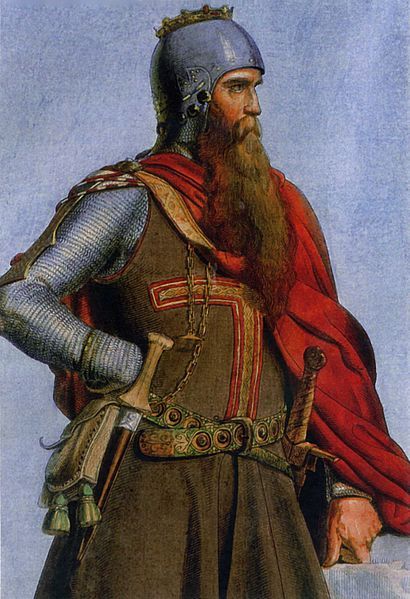
Emperor Frederick I, known as "Barbarossa". Colored copper plate by Christian Siedentopf,1847.
39 notes
·
View notes